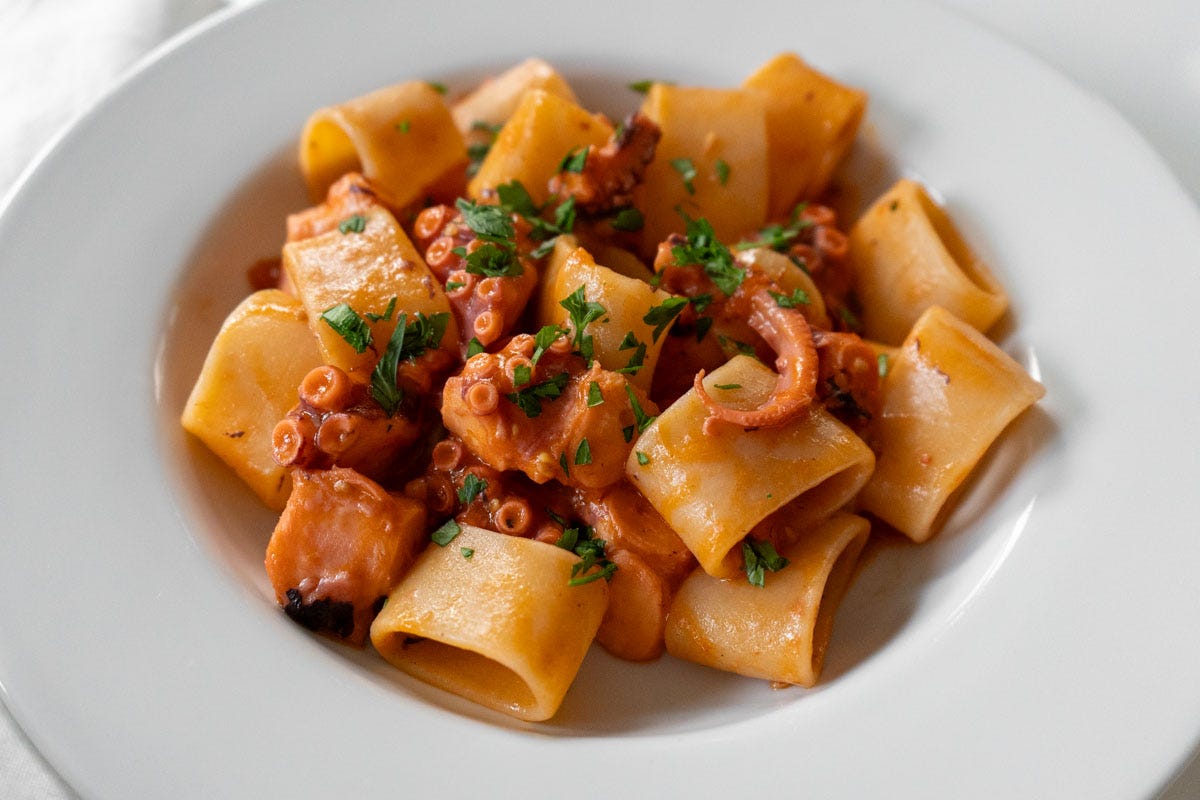At a party recently, a friend of ours introduced us like this:
“This is Stefano and Cara. They eat all sorts of crazy things.”
The conversation had somehow turned to food, and our friend, who is not an adventurous eater, went on to reveal that we get a kick out of texting him the occasional picture of whatever unconventional food we happen to be enjoying.
In fairness, it doesn’t take much for food to be considered unconventional here in land-locked Minnesota. This is especially true for seafood, which usually means fried walleye, shrimp cocktail, lobster rolls, clam chowder, and other American classics.
When we say seafood, we mean the seafood we enjoy in Italy: oysters, clams, mussels, shrimp in their shells, sea urchins, calamari, Mediterranean white fish such as branzino, and octopus, one of our favorites.
There are a few restaurants in the Minneapolis area with good seafood options, but seafood pasta, in particular, is hard to come by. So, like so many other of our favorite Italian foods, we just make it at home.
Craving a seafood pasta this weekend, we considered our options:
Spaghetti alle vongole (spaghetti with clams) is tried and true, but not very adventurous.
The spaghetti al pesce spada (swordfish spaghetti) recipe we learned while vacationing in Sicily is amazing, but we’ve made it a few times lately and wanted something different.
A pasta con frutti di mare (mixed seafood pasta) is always delicious, but preparing all of the seafood involves many steps, and that felt too complicated to write about in this newsletter.
We settled on pasta al sugo di polpo, pasta with an octopus ragù, something we’d not made before. When we prepare octopus, it’s usually insalata di polpo, a cold octopus salad. Sometimes, we make octopus with potatoes or just grill the tentacles and drizzle olive oil and lemon on top. An octopus pasta sounded delicious, though, so decided to give it a try.
The first order of business was finding an octopus, not an easy task. Our go-to seafood market was out of octopus until Monday. The Asian supermarket next door didn’t have any, nor did the backup seafood market located on the other side of town. I was ready to abandon the idea, but Stefano told me to try Whole Foods. Sure enough, they had one. Literally, they had one octopus. But one was all we needed!
Next up—deciding what pasta to use. We wanted paccheri, the large, tubular pasta from the Campania region in southern Italy. Paccheri are sloppy and chewy, and their ample surface area is perfect for chunky sauces to adhere to. However, finding paccheri meant making yet another stop at one of the two Italian markets in town, so we settled on calamarata, similarly shaped but just a little shorter.
We had everything else we needed on hand: on-the-vine tomatoes, garlic, red pepper, olive oil, Italian parsley, bay leaves, cloves, and, of course, salt.
Before you begin
The first step in preparing the pasta is to cook the octopus. If you are new to cooking octopus, here are a few tips:
An old Italian wives’ tale says to add the cork from a wine bottle to the cooking water. Apparently, cork contains natural enzymes that break down the tendons and render the octopus more tender. Just make sure that it is a natural cork and is not one of the new synthetic wine corks.
Toss a few bay leaves, several whole cloves, and a handful of salt into the water to season it
If your octopus is frozen, let it thaw before cooking it.
Dip the octopus in the boiling water a few times before submerging it entirely. Dipping causes the tentacles to contract into pretty curls, as Stefano illustrates in the video below.








